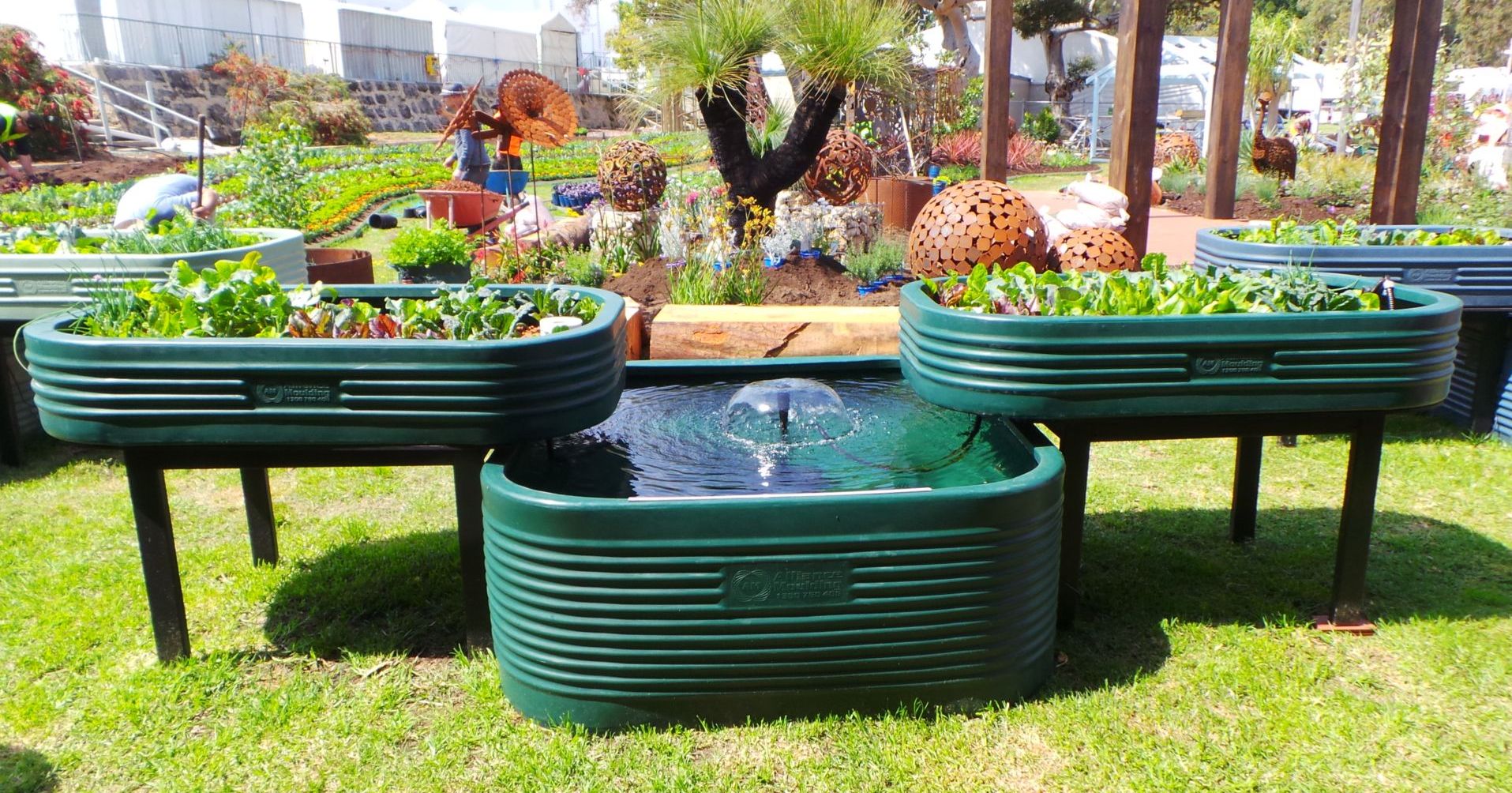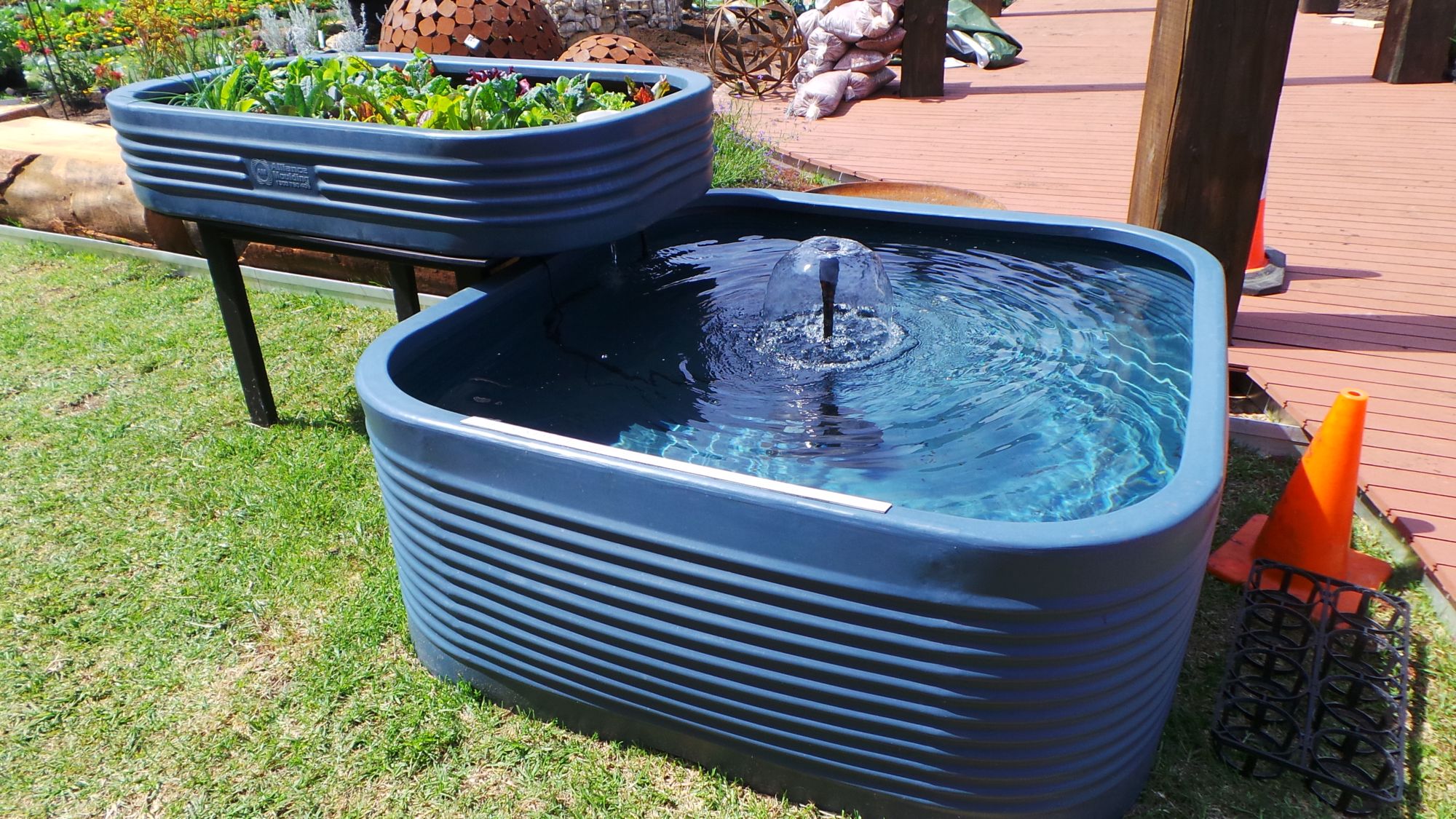Aquaponic gardening supplies are the cornerstone of successful aquaponic systems, enabling the harmonious coexistence of fish and plants in a mutually beneficial ecosystem. This guide delves into the essential components, types of systems, and factors to consider when selecting the right supplies for your aquaponic adventure.
From fish tanks to grow beds, water pumps to aerators, each component plays a vital role in maintaining a thriving aquaponic environment. Understanding the purpose and function of these supplies empowers you to make informed decisions and optimize your system’s performance.
Introduction
Aquaponic gardening is a sustainable food production system that combines aquaculture (the raising of fish) with hydroponics (the growing of plants in water). Aquaponic gardening offers several benefits, including:
- Increased food production: Aquaponic systems can produce more food per square foot than traditional gardening methods.
- Water conservation: Aquaponic systems use 90% less water than traditional gardening methods.
- Nutrient efficiency: Aquaponic systems recycle nutrients from fish waste, which helps to reduce fertilizer costs.
- Pest and disease resistance: Aquaponic systems are less susceptible to pests and diseases than traditional gardening methods.
Aquaponic gardening supplies are essential for setting up and maintaining an aquaponic system. These supplies include:
- Fish tank: The fish tank is where the fish are raised.
- Grow bed: The grow bed is where the plants are grown.
- Water pump: The water pump circulates the water between the fish tank and the grow bed.
- Filter: The filter removes waste from the water.
- Air pump: The air pump provides oxygen to the fish.
Essential Aquaponic Gardening Supplies
Aquaponic gardening combines aquaculture (fish farming) with hydroponics (plant cultivation in water) to create a sustainable and efficient food production system. To establish a successful aquaponic system, certain essential supplies are required.
Fish Tanks or Containers
The fish tank or container serves as the habitat for the fish and the source of nutrient-rich water for the plants. Choose a tank or container that is large enough to accommodate the number of fish and plants in your system.
Consider the species of fish you intend to raise, as some require specific water parameters.
Types of Aquaponic Gardening Systems

Aquaponic gardening systems vary in design and operation. Understanding the different types can help you choose the most suitable system for your needs and available resources.
There are four main types of aquaponic gardening systems:
Recirculating Aquaculture Systems (RAS)
- In RAS, water is continuously circulated through a closed loop, from the fish tank to the grow beds and back to the fish tank.
- RAS systems are efficient in water and nutrient utilization, making them suitable for small-scale and commercial operations.
- However, they require more technical expertise and maintenance compared to other systems.
Nutrient Film Technique (NFT)
- NFT systems use a thin film of nutrient-rich water that flows over the roots of plants.
- The water is constantly recirculated, providing a continuous supply of nutrients to the plants.
- NFT systems are relatively simple to set up and maintain, making them suitable for beginners and hobbyists.
- However, they can be more prone to clogging and require precise water flow control.
Deep Water Culture (DWC)
- DWC systems involve suspending plant roots directly in nutrient-rich water.
- The water is constantly aerated to provide oxygen to the roots.
- DWC systems are simple to set up and maintain, and they allow for high plant density.
- However, they can be more susceptible to root rot and require regular monitoring of water quality.
Media-Based Systems
- Media-based systems use a solid growing medium, such as gravel or expanded clay pebbles, to support the plants.
- The nutrient-rich water is periodically flooded over the growing medium, providing nutrients to the plants.
- Media-based systems are more forgiving than other systems, making them suitable for beginners and those with limited experience.
- However, they can be more labor-intensive and require regular cleaning of the growing medium.
Choosing the Right Aquaponic Gardening Supplies

Selecting the right aquaponic gardening supplies is crucial for the success of your system. Consider the following factors:
System Size and Capacity
- Determine the size of your system based on the number of fish you plan to keep and the amount of plants you want to grow.
- Consider the water volume required for your fish and plants, as well as the space available for the system.
Fish Species and Plant Selection
- Choose fish species that are compatible with the plants you plan to grow and the water conditions of your system.
- Consider the growth rate, nutrient requirements, and compatibility of different plant species.
Budget and Availability, Aquaponic gardening supplies
- Set a budget for your aquaponic system and research the cost of different supplies.
- Consider the availability of supplies in your area and the shipping costs if necessary.
Supplies for Different Aquaponic Systems
The specific supplies you need will vary depending on the type of aquaponic system you choose:
- Media-Based Systems:Require grow beds filled with media such as gravel or expanded clay pellets.
- Nutrient Film Technique (NFT) Systems:Use thin channels of water flowing over plant roots.
- Deep Water Culture (DWC) Systems:Suspend plants in a deep tank of water.
Maintenance and Troubleshooting

Maintaining an aquaponic gardening system is crucial to ensure its efficiency and longevity. Regular monitoring and troubleshooting can prevent potential problems and keep the system running smoothly.
Some common issues to look out for include:
Water Quality Monitoring
- pH level:Maintain a pH range of 6.5-7.5 for optimal plant growth and fish health.
- Ammonia and nitrite levels:These should be kept at zero or near zero to prevent fish toxicity.
- Dissolved oxygen levels:Ensure adequate oxygen levels in the water for both fish and plants.
Fish Health Management
- Disease prevention:Regularly inspect fish for signs of disease and treat promptly.
- Water temperature:Maintain optimal water temperature for the fish species being raised.
- Feeding:Feed fish a balanced diet to ensure proper growth and health.
Plant Nutrient Deficiencies
- Nitrogen deficiency:Yellowing of leaves, stunted growth.
- Phosphorus deficiency:Purple or reddish leaves, poor root development.
- Potassium deficiency:Brown or yellow leaf edges, wilting.
Benefits of Aquaponic Gardening Supplies

Aquaponic gardening supplies provide numerous benefits that make them an attractive option for both commercial and hobbyist growers. These benefits include:
- Increased crop yield:Aquaponic systems can produce significantly higher yields than traditional gardening methods due to the constant availability of nutrients and water. The symbiotic relationship between the fish and plants creates a closed-loop system that maximizes resource utilization, resulting in increased plant growth and productivity.
When setting up your aquaponic gardening system, it’s important to have the right supplies. Whether you’re a beginner or an experienced gardener, you’ll find everything you need at hydroponics dallas . They have a wide selection of aquaponic gardening supplies, including grow beds, pumps, and nutrients.
So whether you’re just starting out or you’re looking to upgrade your existing system, hydroponics dallas has everything you need to grow healthy, thriving plants.
- Improved water efficiency:Aquaponics uses 90% less water than traditional gardening methods, making it an environmentally sustainable option. The water used in the fish tank is recirculated and used to irrigate the plants, reducing water consumption and waste.
- Reduced environmental impact:Aquaponics minimizes the environmental impact associated with traditional agriculture. By eliminating the need for chemical fertilizers and pesticides, it reduces water pollution and soil degradation. Additionally, the closed-loop system conserves water and reduces greenhouse gas emissions.
- Enhanced food security:Aquaponic gardening can provide a reliable and sustainable source of food, especially in areas with limited access to fresh produce. It allows for year-round production, even in harsh climates, and can be scaled up to meet the needs of communities or commercial operations.
Conclusion: Aquaponic Gardening Supplies
In summary, selecting the appropriate aquaponic gardening supplies and maintaining the system properly are crucial for a successful and productive aquaponic garden. By understanding the various types of systems, supplies, and maintenance requirements, you can create a thriving and sustainable ecosystem that provides both fish and plants with the nutrients they need to flourish.
Remember, the key to a successful aquaponic garden lies in choosing the right supplies and maintaining the system regularly. By following these guidelines, you can enjoy the benefits of fresh, organic produce and healthy fish while minimizing environmental impact.
Summary
Choosing the right aquaponic gardening supplies is crucial for a successful and sustainable system. By considering factors such as system size, fish species, and budget, you can tailor your setup to meet your specific needs. With proper maintenance and troubleshooting, your aquaponic system will flourish, providing you with fresh, nutritious produce and the satisfaction of cultivating a thriving ecosystem.
Key Questions Answered
What are the benefits of using aquaponic gardening supplies?
Aquaponic gardening supplies offer numerous benefits, including increased crop yield, improved water efficiency, reduced environmental impact, and enhanced food security.
How do I choose the right aquaponic gardening supplies for my system?
When selecting aquaponic gardening supplies, consider factors such as system size and capacity, fish species and plant selection, and budget and availability.
What are the different types of aquaponic gardening systems?
There are various types of aquaponic gardening systems, including recirculating aquaculture systems (RAS), nutrient film technique (NFT), deep water culture (DWC), and media-based systems.
How do I maintain and troubleshoot my aquaponic gardening system?
Proper maintenance and troubleshooting are essential for a successful aquaponic gardening system. Monitor water quality, manage fish health, and address plant nutrient deficiencies promptly.